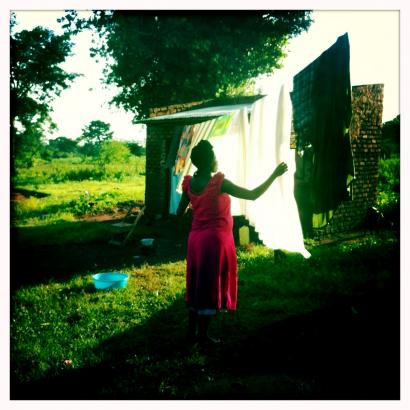In November, Pulitzer Center grantee and Everyday Africa photographer Allison Shelley paid a visit to about 30 students at The Inspired Teaching Demonstration Public Charter School. They were the fifth and sixth-graders who visited fellow Pulitzer Center grantee and Everyday Africa co-founder Austin Merrill in October for the first in a series of photography workshops aimed at diluting media stereotypes and increasing visual literacy.
At the first workshop, the class studied the Everyday Africa Project with Austin. He and journalist Peter DiCampo, frustrated with many of the Western media's depictions of Africa, founded the initiative in early 2012.
At the second workshop Allison, who has reported extensively from Africa and is a contributing photographer on Everyday Africa's official site, shared some of her own work, much of which she'd shot on her cell phone. She and the Inspired Teaching students talked about how to take a good photo and how to tell a whole story with one image, no matter what tool they used.
"Why do we take photos?" she asked the class.
"To remember something," they said. "To start a tradition." "Recording events." "Spying." "To observe and document things." And "selfies, 'cause they're fun."
"I take pictures of how other people's lives are and bring them to you guys so you can see," Allison explained of her job as a documentary photographer. "Think about, 'how can I make this familiar thing look different?'"
The classes discussed how the photos Allison shared made them think differently about people and places, and which aspects of the photos inspired those feelings.
"It's a better picture if you can see their face, because then you can see what they're feeling," one student pointed out. They also considered the photographers' use of techniques like shadow, patterns, lines and framing.
Then Allison gave the kids an assignment. They'd spent the past several weeks documenting their neighborhoods through their own photography, but now they had Allison's tips to guide them as well. So we adjourned to the yard behind the school, handed out a few cameras and turned them loose.
Turning discussion immediately into practice seemed to be a good tactic with this group. Their thoughtfulness in snapping new photos was immediately evident. They used interestingly shaped shadows in imitation of an Everyday USA photo Allison had showed them. They photographed from all angles. They jumped in the air and went to the basketball court and captured action shots of each other. They posed on the bleachers and on a large green metal box at the edge of the yard.
"They never played on that green thing before," teacher Latisha Coleman told Allison and me, "even though they walk by it every day." To this group, that schoolyard represented a large piece of their everyday lives.
We moved back into the classroom after about forty-five minutes to wrap up with some projections of the students' own photos from the last few weeks, which Allison discussed with them.
Much of the class could relate to a photo of a broken bottle on the ground. "I see that a lot in my everyday life," one student said.
We clicked to an image of a pair of shoes dangling over a telephone wire, a situation students said they thought bullies were responsible for, adding that the photo made them feel "uncomfortable" and "unprotected."
They said a photo of a gas station taken at a crooked angle made them feel unbalanced. But "life is unbalanced," one student remarked.
As they photographed in the schoolyard that day, the classes shared cameras in small groups. At one point a student who'd been across the schoolyard came sprinting back to his group excitedly.
"I have an amazing shot, I have an amazing shot, gimme!" he shouted as he barreled toward them, reaching for the camera.
"I know what I want for Christmas now," another declared.



















































